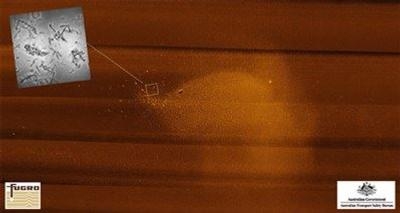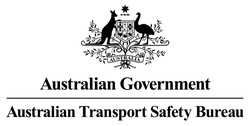Fri, Aug 14, 2015
Says Contacts Are Old, Had Been Previously Discounted
The Australian Transportation Safety Bureau (ATSB) says that recent articles suggesting that sonar images gathered during the underwater search for MH370 could be aircraft debris are incorrect.

The sonar contacts mentioned in the articles are old ones that were already assessed and discounted months ago.
The ATSB says the articles also incorrectly describe ‘Category 3’ sonar contacts as being the most likely to be aircraft debris. In fact, they are the least likely to be aircraft debris. Category 3 is assigned to sonar contacts that are of some interest as they stand out from their surroundings but have low probability of being significant to the search. The underwater search so far has identified more than 400 seabed features that have been classified as Category 3.
According to the ATSB website, there are three classifications for sonar contacts which are identified during the course of the underwater search.

Classification 3 is assigned to sonar contacts that are of some interest as they stand out from their surroundings but have low probability of being significant to the search. The underwater search so far has identified more than 400 seabed features that have been classified as category 3.
Classification 2 sonar contacts are of more interest but are still unlikely to be significant to the search. There have been more than 20 features that have been classified as category 2. These objects may or may not be man-made, but expert analysis of the sonar imagery ranks them as having a low probability of being an aircraft debris field.
Classification 1 sonar contacts are of high interest and warrant immediate further investigation. When a Classification 1 sonar contact is reported, the search vessels are instructed to gather higher resolution/ high frequency sonar data flying the AUV or towfish closer to the seafloor, (an altitude of between 35 meters and 50 meters). If the high-resolution sonar data looks promising, a photo mission is then run at very low altitude (between 8 meters and 10 meters) to identify positively any objects on the seafloor. Generally, these contacts are rare, as only two have been marked to date. One was determined to be a rock field, and the second was found to be an old wooden shipwreck.
(ATSB image: Mosaic of shipwreck debris field with photo of anchor taken by Echo Surveyor VII classified as Category 1)
More News
With Testing Soon Complete, Launch Preparations Begin in Earnest Sierra Space's Dream Chaser has been put through the wringer at NASA's Glenn Armstrong Test Facility in Ohio, but w>[...]
Takeoff Roll The process whereby an aircraft is aligned with the runway centerline and the aircraft is moving with the intent to take off. For helicopters, this pertains to the act>[...]
“We’re proud of the hard work that went into receiving this validation, and it will be a welcome relief to our customers in the European Union. We couldn’t be mor>[...]
"Aircraft Spruce is pleased to announce the acquisition of the parts distribution operations of Wag-Aero. Wag-Aero was founded in the 1960’s by Dick and Bobbie Wagner in the >[...]
IDENT Feature The special feature in the Air Traffic Control Radar Beacon System (ATCRBS) equipment. It is used to immediately distinguish one displayed beacon target from other be>[...]
 Sierra Space Repositions Dream Chaser for First Mission
Sierra Space Repositions Dream Chaser for First Mission ANN's Daily Aero-Term (05.10.24): Takeoff Roll
ANN's Daily Aero-Term (05.10.24): Takeoff Roll Aero-News: Quote of the Day (05.10.24)
Aero-News: Quote of the Day (05.10.24) Aero-News: Quote of the Day (05.11.24)
Aero-News: Quote of the Day (05.11.24) ANN's Daily Aero-Term (05.11.24): IDENT Feature
ANN's Daily Aero-Term (05.11.24): IDENT Feature




